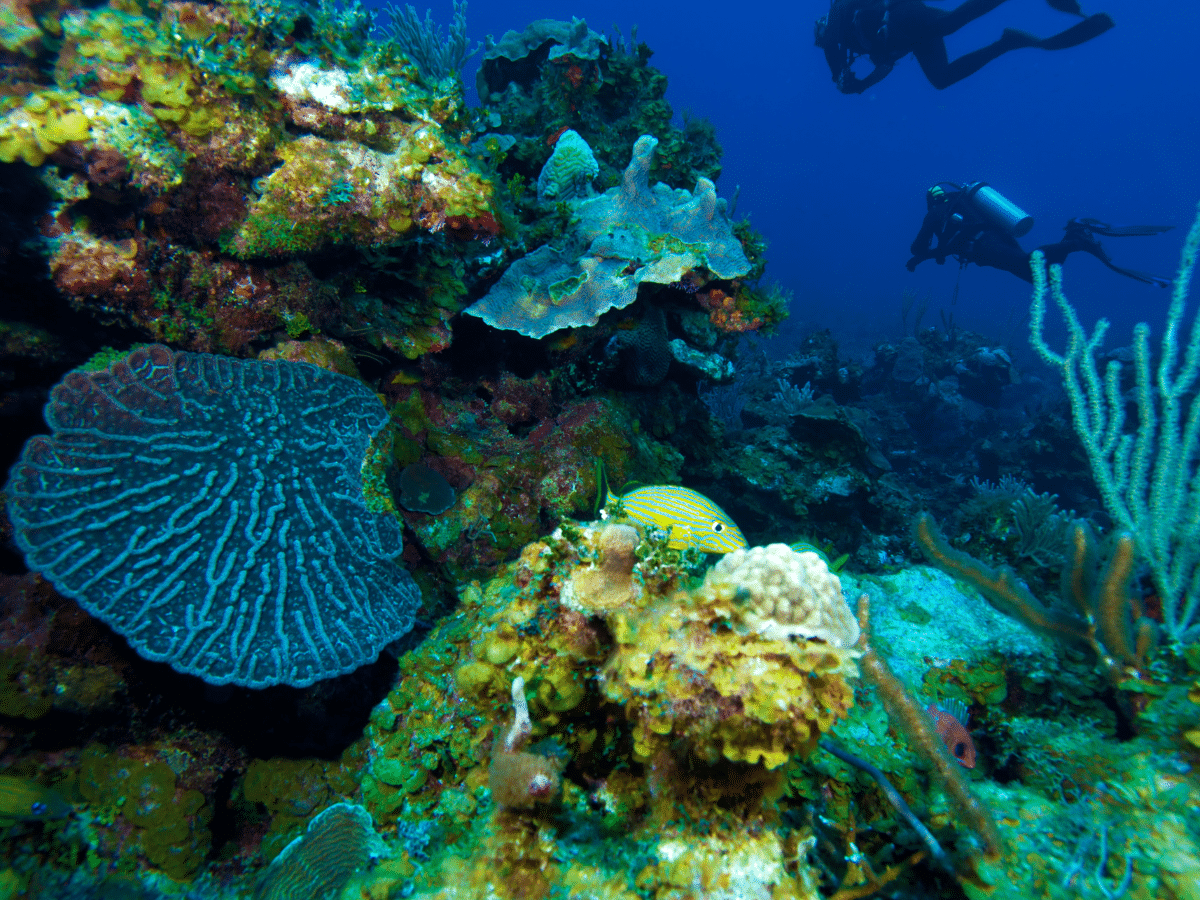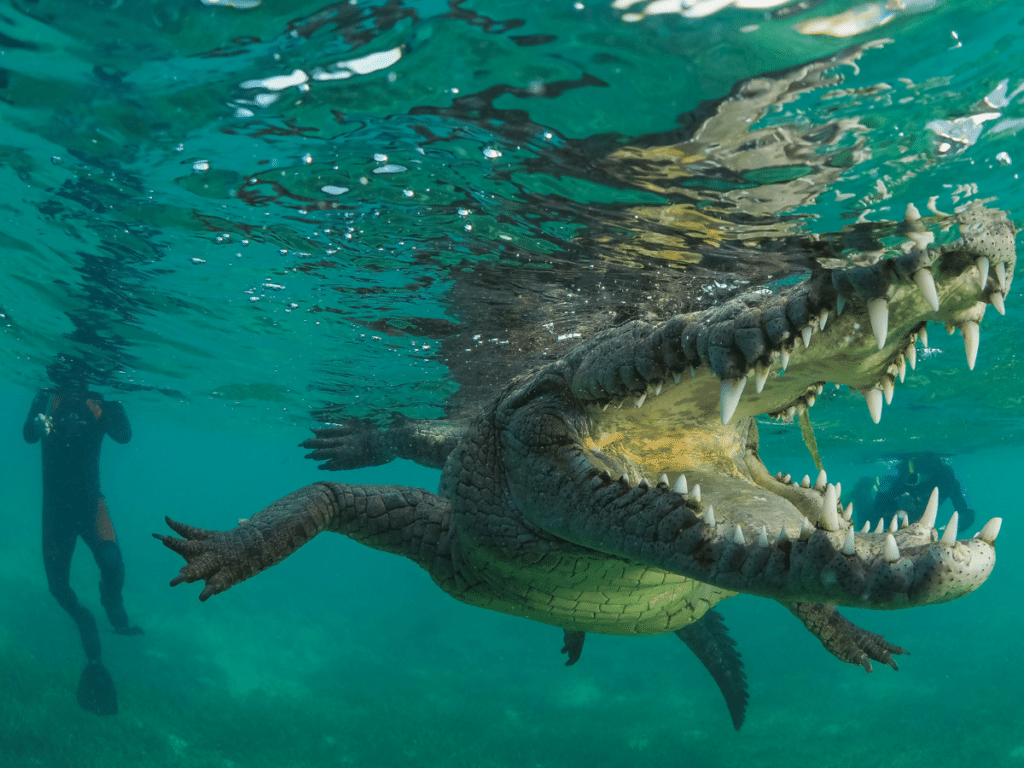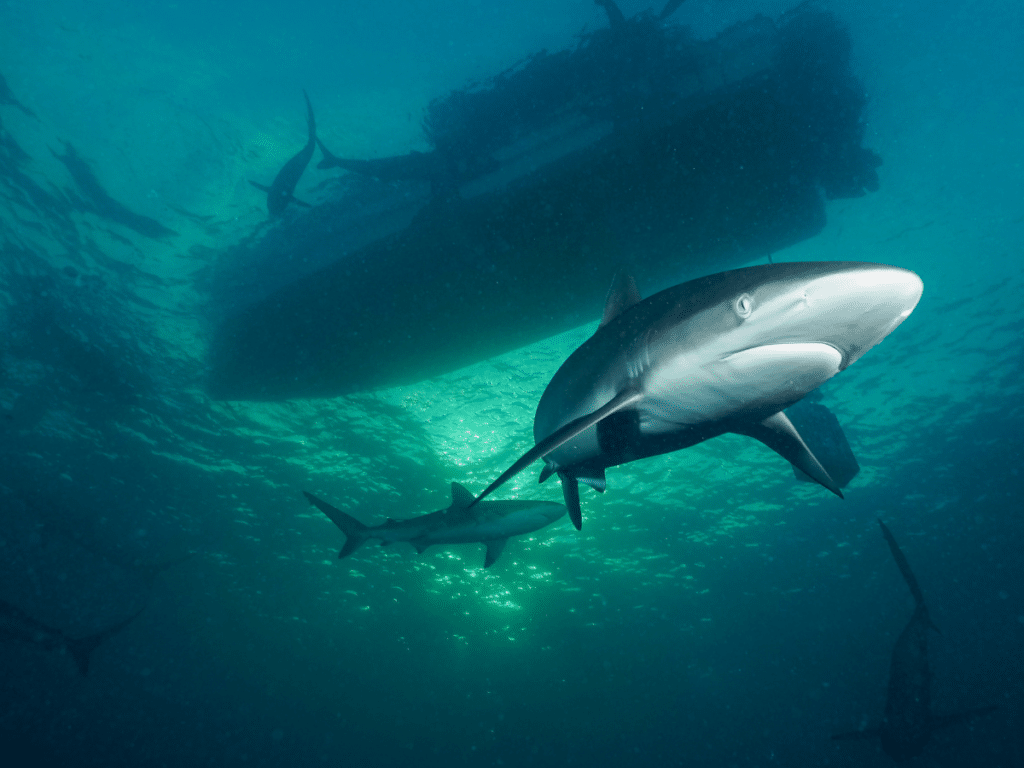Jardines De La Reina: A Local’s Guide to Cuba’s Most Impressive Dive Site [in 2024]
One of the most impressive, if little-explored, places to visit in Cuba has no permanent residents but is teeming with life. Jardines de la Reina, known as the Gardens of the Queen, is an immense archipelago and protected marine reserve that sits just off the Cuban mainland and is among one of the Caribbeans’s greatest natural treasures.
Looking to explore the richness of one of the most untouched and undisturbed waters of the Caribbean, the likes of which you won’t find anywhere else? Our local guide to visiting Jardines de la Reina will help you explore like a pro, including how to visit and where to stay… and why Fidel Castro’s former favorite dive sites are even better than they were decades ago.

This post contains affiliate links that may reward me monetarily or otherwise when you use them to make qualifying purchases – at no cost to you. As an Amazon Associate, I earn from qualifying purchases. For more information, please read our disclosure policy.
Jardines de la Reina, Cuba
Nestled along the southern coast of the Cuban mainland, Jardines de la Reina is undoubtedly one of Cuba’s richest and most diverse natural areas. Running approximately 100-150 miles in length along a stretch of Cuban coastline, the region is home to over 600 islets and cays, making it the second-largest archipelago in Cuba.
The region was first formally protected in 1996 when it was designated as a marine reserve, and access was tightly controlled. In 2010, Jardines de la Reina was officially declared one of Cuba’s national parks; at nearly 850 square miles in size, it’s one of Cuba’s largest protected areas.
Today, Jardines de la Reina is the largest no-catch, protected marine reserve in the entire Caribbean. Decades of stringent protection have allowed the marine life in Jardines de la Reina to thrive here in an unprecedented way. Multiple species of sharks grow larger in Jardines de la Reina than anywhere else, while incredibly well-preserved corals and sponges bloom. Many long-time divers compare it to the Caribbean of old.
It’s no surprise that Jardines de la Reina is the most popular diving site in Cuba. Just one dive company operates in the area, offering live aboard experiences that last for a few days at a time, but it’s easily one of the best things to do in Cuba.
The number of visitors allowed to visit the park every year is tightly restricted to around 3,000 a year. While this visitor cap means that a dive experience here must be booked months in advance, it contributes to keeping the destination just as untouched as it was years ago.
Gardens of the Queen
Jardines de la Reina, which translates to Gardens of the Queen in English, was given its name by Christopher Columbus when he first explored the area on his second voyage to the Americas, in 1494. He named it in honor of Queen Isabella I of Spain, who was integral in funding his voyages.
Naming the rich ocean area peppered with islands as a garden reflected its immense wealth of vegetation and natural life, which is still reflected in its protected state today.
The name was reflected in the 1514 naming of Cuba’s northern archipelago Jardines del Rey – the Gardens of the King – by Diego Velázquez de Cuéllar. Cuéllar had been a part of Columbus’ second voyage to the Americas and later was tasked with establishing popular centers in Cuba, among them Baracoa, Santiago de Cuba, and Havana.
History of Jardines de la Reina
More recent history of Jardines de la Reina only adds to its interest among curious travelers. The area is famous for having been Fidel Castro’s most beloved fishing and diving spot in the country. As a destination dearly beloved nature by Cuba’s leader, the area was protected long before the official 1996 declaration of Jardines de la Reina as a marine reserve.
Today, the Castro connection makes Jardines de la Reina even more intriguing for visitors. While you don’t have to share the last name of the leaders to visit anymore, the stringently restricted access to the national park continues what has long been an air of being off-limits that makes a visit such a thrill.
Jardines de la Reina Map
In this Jardines de la Reina map, you’ll see the area perched off of the southern shore of the main island of Cuba and along a chain of cays off the provinces of Ciego de Ávila and Camaguey.
The most important islands in the archipelago include Cayo Anclitas, Cayo Cinco Balas, and Cayo Granada. However, Jardines de la Reina maintains no permanent population, meaning that all visitors and even guides and national park workers come and go, and all the area’s cays are uninhabited.
To access Jardines de la Reina, visitors will take transportation from the town of Jucaro, which is located about six hours from the airport in Havana.
Travel Insurance
Cuba requires that all travelers have proof of a comprehensive travel insurance policy in order to enter the country. Check out our guide to travel insurance for Cuba for more details. We recommend these brands for Cuba travel insurance:
- Visitors Coverage: Coverage for Cuba travel available to citizens of all countries, though not currently available to residents of New York and Maryland in the United States.
- Insubuy: Coverage for Cuba travel available to citizens of all countries and states of the United States.

Jardines de la Reina National Park
Jardines de la Reina National Park is a pristine gem that impresses the few fortunate travelers who are able to make it here, just 3,000 annually.
The park comprises over 600 islets and cays along its nearly 150-mile stretch a number of miles off of the Cuban mainland. The refuge the park’s protected status has offered to native marine species has meant that fish numbers have increased in the area by nearly 50% since the late 1990s. The park was even awarded the prestigious Blue Parks Award by the Marine Conversation Institute a few years ago.
Access to Jardines de la Reina National Park is strictly limited to travelers exploring alongside licensed guides. In this case, that limits it to those traveling with Avalon Diving Center live abroad experiences that depart from the port of Jucaro. There are no permanent residents living within the park, and just one permanent base here for conversation purposes and diving launches.
What to Pack for Cuba
Check out our Ultimate Cuba Packing List to help you pack for your trip – we’re sharing exactly what to bring to Cuba and what we never travel without.

Jardines de la Reina Diving
There’s plenty to love about diving in Jardines de la Reina, one of the most pristine dive destinations in the Caribbean. However, the area is perhaps best known for its unrivaled opportunities to spot and even interact with marine life.
Famously, Jardines de la Reina is known as one of the best places on the planet for swimming with sharks, many of which grow to impressive sizes in these protected waters. Live aboard dive participants also rave about opportunities for swimming with American crocodiles!
These are some of the species divers are most likely to encounter in Jardines de la Reina:
- Caribbean Reef Sharks
- Silky Sharks
- Great Hammerhead Sharks
- Nurse Sharks
- Atlantic Tarpon
- Giant Grouper (Jewfish)
- Moray Eels
- Numerous species of sea turtles and tortoises
While Jardines de la Reina is perhaps most famous for the animal encounters while diving, it has a number of incredible dive sites known for their corals, sponges, and candy-colored underwater landscapes that will make even the most well-traveled diver swoon. These are just a few of the most well-known spots for diving in the national park.
Dive Sites in Jardines de la Reina
Black Corals
Black Coral I and Black Coral II dive sites are known not just for their impressive coral formations, but for a group of reef sharks that call the area home. Diving here is a mix of excitement, waiting for sharks to appear and enjoying a stunning reef.
Pipín
Dramatic underwater formations along the coral reef at Pipín are home to sea turtles, rays, and schools of brilliantly-colored fish, including jacks and tarpons. Silky sharks and the occasional hammerhead shark can be spotted here.
Farallón
A massive coral “mountain” makes Farallón one of the best dive sites in Jardines de la Reina. The “mountain” hides numerous channels and caverns that divers can explore. Reef sharks can often be spotted here as well.
Vicente
Black corals and numerous species of sharks are all to be expected when diving at Vicente, where a dramatic drop-off creates an incredible wall-diving experience.
How to Dive in Jardines de la Reina
Diving in Jardines de la Reina is strictly limited, protecting the pristine environment of this national park. Only one dive operation – Avalon Diving Center – is licensed to bring divers into the area; they’re allowed to bring no more than 3000 divers to the area every year. Diving in Jardines de la Reina requires booking one of the company’s live abroad experiences on its six unique ships.

Jardines de la Reina Liveaboard
Avalon Diving Center offers live abroad cruises on its six vessels throughout the year, providing a number of itineraries and cruise experiences for divers of all levels looking to explore Jardines de la Reina. Most ships carry less on each expedition, allowing for a smaller group experience.
While the company’s ships vary in size and aren’t luxury cruises by any means, they’re extremely comfortable and offer all the necessary accommodations for a comfortable experience.
Avalon’s ships depart from the port of Jucaro on the southern coast of Cuba, just a tiny town on the southern side of the Ciego de Ávila province in the center of the country. The drive to port from Havana is about six hours and is the easiest option for most travelers; alternatively, some travelers fly to Ciego de Ávila and make the 40-minute drive from there. Avalon can help arrange transportation for travelers.
All food and drinks are included in the price of the excursion, as are all dives and related transportation expenses. Booking is available online through PADI Travel and Liveabroad.com, making both payment and reservation an easy process.
Travel Essential
Don’t think about traveling to Cuba without a good VPN (Virtual Private Network). Using a VPN while connecting to the internet is an easy way to keep your personal information safe from hackers and trackers. We’ve used NordVPN for years and couldn’t recommend it more – it’s a must for safety online, especially in Cuba.
Jardines de la Reina Diving Price
Most Avalon live abroad experiences in Jardines de la Reina run around $450 per day per person. For the standard 7-day, 6-night live abroad cruises that are most popular, the total for the experience comes to around $3,000 – 4,000 USD per person, making it an expensive but memorable dive intensive for all participants.
Participants should keep in mind that this does not include the cost of international airfare or transportation to and from Jucaro port from Havana or an alternative destination. Also, participants should plan on bringing cash (whether in USD, CAD, or Cuban Pesos) for a tip for staff and crew upon completion of the experience.
Read More: Currency in Cuba: A Local’s Guide for Travelers
Jardines de la Reina Fishing
While commercial fishing is strictly prohibited in these protected waters, fishing has long been popular in Jardines de la Reina. In fact, it was Fidel Castro’s favorite fishing area in Cuba and was long considered to exist practically for his own personal use. Giant schools of fish like tarpons, jacks, barracuda, and many more are everywhere here, making it a favorite destination for fishermen.
Today, travelers are able to fish in Jardines de la Reina when accompanied by Avalon Diving Center’s sister company, Avalon Fishing Center. Excursions depart from the port of Jucaro and offer more flexibility than diving live aboard do.

Carley Rojas Avila is a bilingual travel writer, editor, content marketer, and the founder of the digital travel publications Home to Havana and Explorers Away. She is a serial expat and traveler, having visited 40+ countries and counting. Carley has written for publications like Travel + Leisure, MSN, Associated Press, Weather Channel, Wealth of Geeks, and more. Find her front row at a Bad Bunny concert, befriending street cats, and taste-testing every pizza in Havana.

